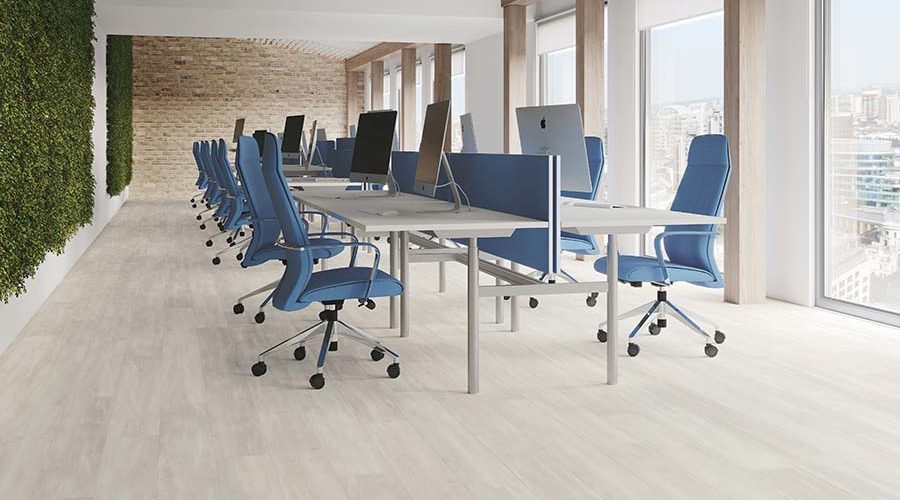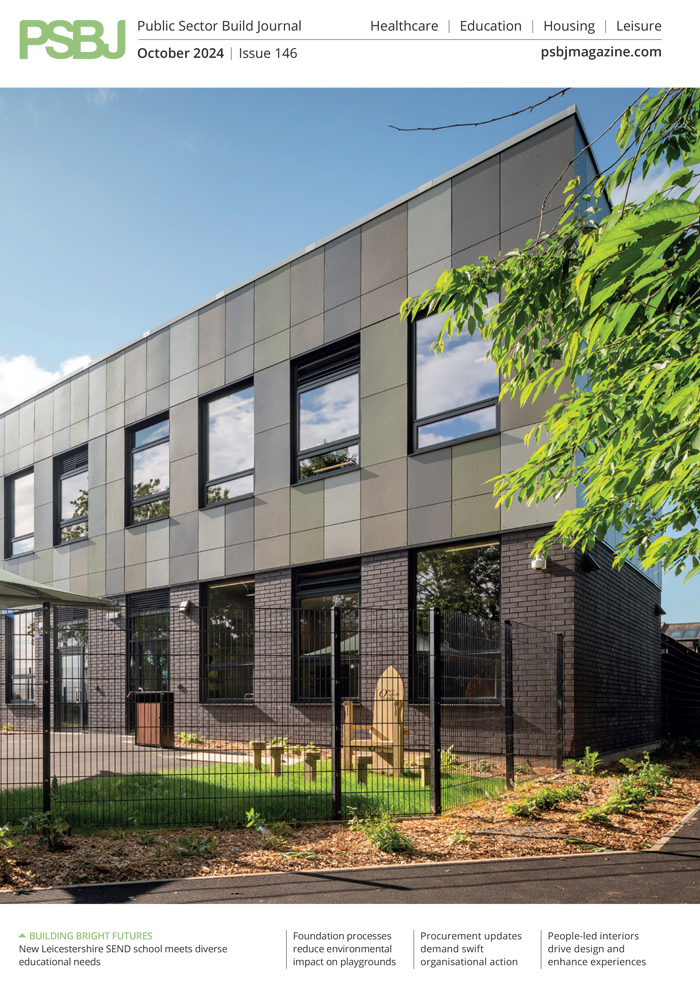Flooring is one of the biggest surfaces in a building and it plays a multitude of roles. From contributing to the overall look and feel of a venue, to providing safety and durability, luxury vinyl tile floors are perfect for revolutionising education and leisure environments, says Sophia Wise, Regional Commercial Manager at Amtico.
Amtico
As the largest surface used in a building, specifiers are often lured by the aesthetics of a flooring. However, aside from the way it looks, this essential product needs to deliver on many more levels and when it comes to commercial design, luxury vinyl tile (LVT) floor is leading the way. Not only is it incredibly versatile, it is also one of the most durable and hardwearing products available.
As specifiers across all sectors look to create more flexible spaces, which carefully balance attractive design with functionality and safety, LVT flooring is quickly becoming the flooring of choice. It offers complete design freedom, while also presenting a commercially-beneficial alternative to other materials, such as natural wood or stone, sheet vinyl and laminates. Additionally, it provides the shapes, angles/geometry and scale needed to optimise a space, yet remains incredibly durable while meeting VOC requirements for wellbeing and air quality.
The durability of LVT lies in the complex construction of its layers. For manufacturers of high-quality LVT, a typical product consists of up to six laminated layers, plus a urethane coating. Each has its own dedicated role, although the crucial layer aiding specification in education or leisure is the performance wear layer. The thickness and density of this correlates significantly with the durability of a product and should be carefully considered during the specification process – especially when longevity is required. Indeed, Amtico uses a 1mm wear layer for its Signature collection, which also carries a 20-year commercial warranty.
Nonetheless, if a floor is to be noticed, it won’t be because of the thickness of its wear layer. Rather, it will be the design and laying pattern. There is, of course, no mistaking the distinctive finish of natural wood or stone, but they aren’t typically the most practical in a commercial environment, where there are other factors to consider; the time required to lay the product, safety non-slip options, cleaning schedules and the opportunity to offer something ‘different’. The latter is often the main driver for using LVT, as it not only provides the look and feel of a natural product, but also offers specifiers unlimited possibilities.
Design makes it possible to evoke an emotional response in a person occupying a space, ranging from boosting productivity in a collaborative space, to a feeling of relaxation and comfort in a break-out area. While furniture and paint colours are naturally the first items considered to evoke such a response, flooring also plays an integral role. For instance, a quiet ‘concentration’ zone in a sixth-form building can benefit from calming wood designs, natural palettes and simple laying patterns. Additionally, LVT planks and tiles can be enhanced with acoustic performance backing layers to reduce sound disruptions from rooms on higher levels. Whether used individually or in combination, each of these can make a positive impact on the occupant(s) and how they use the space.
However, the right choice of floor product and design – coupled with a generous commercial warranty – goes a long way in meeting the practical needs of a user, while ensuring durability and long-lasting performance. For these reasons, LVT meets a wealth of specification requirements and offers an attractive, and yet practical, alternative to other traditional flooring materials, such as natural wood, stone, sheet vinyl and laminates.








